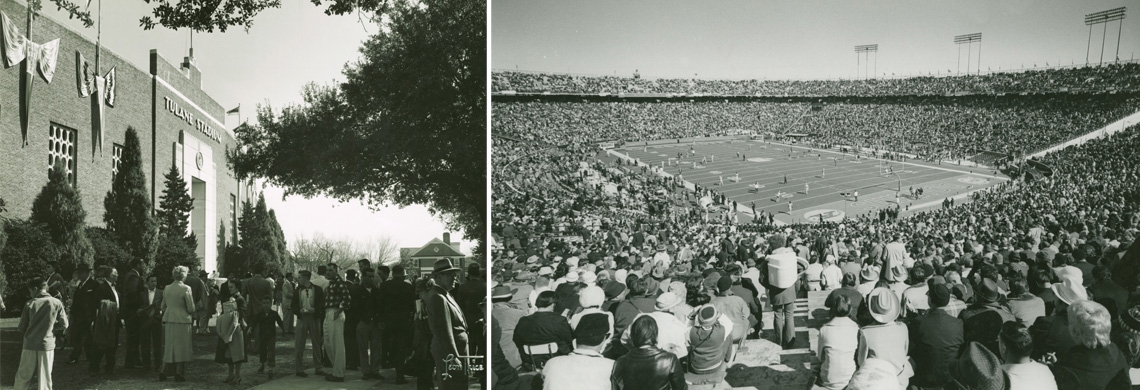On October 24, 1926, in typically festive New Orleans fashion, Tulane Stadium was officially opened. Dedication speeches by Mayor Arthur J. O’Keefe and Governor O. H. Simpson followed a parade of students and supporters as 15,000 spectators filled the stands to watch the Tulane Green Wave battle the Auburn Tigers in the stadium’s inaugural game. The Tigers, however, spoiled the Greenies’ celebration with a blocked punt, a safety, and a 2-0 victory.
 A panoramic image shows the inaugural game at Tulane Stadium, featuring Tulane vs. Auburn, on October 24, 1926. (The Charles L. Franck Studio Collection at THNOC, 1979.325.6729)
A panoramic image shows the inaugural game at Tulane Stadium, featuring Tulane vs. Auburn, on October 24, 1926. (The Charles L. Franck Studio Collection at THNOC, 1979.325.6729)
Paid for by local subscribers, the building was designed by architect Emile Weil and constructed of concrete and brick by the O. M. Gwinn Construction Company. The stadium was located on Willow Street on Tulane’s Uptown campus at the former site of the Foucher sugar plantation, from which it received its "Sugar Bowl" moniker.
In this video, we used archival images and footage to illustrate the history of Tulane Stadium.
Modern amenities included women’s restrooms, telephones, and a large electronic scoreboard, which was heralded as “the most complete football scoreboard in the United States” by the New Orleans Item. Over the years the stadium was expanded multiple times—end zone sections were added, as well as an upper deck, until eventually it reached a capacity of 80,985 in 1947.
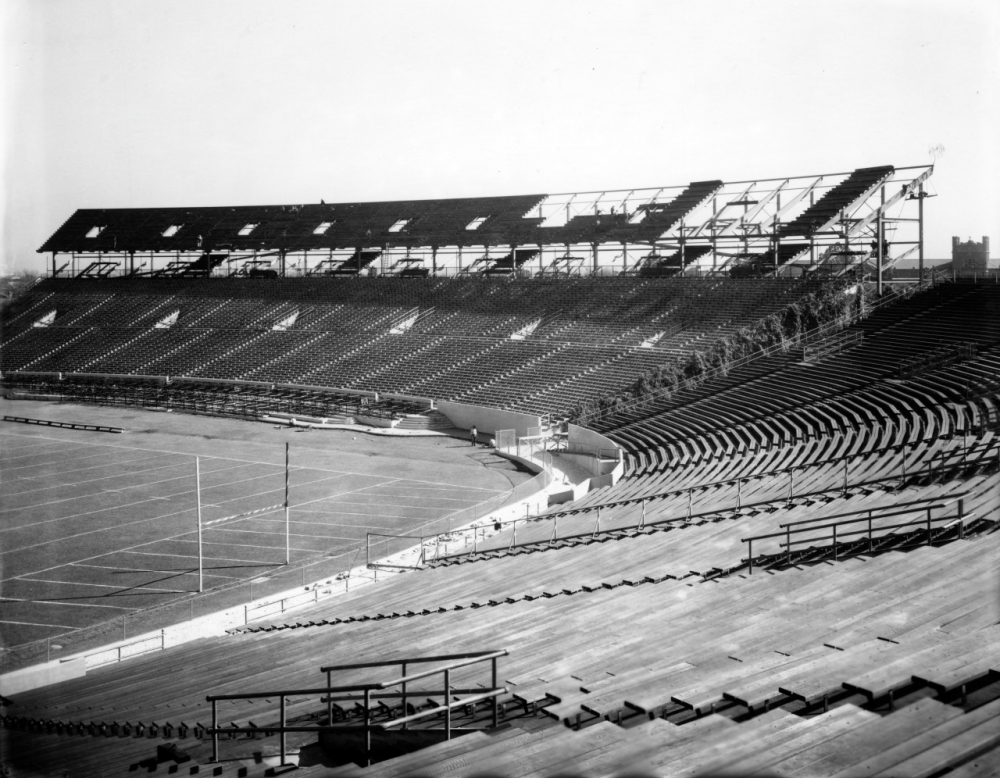 Construction of the east grandstand is shown here in 1939. Tulane Stadium reached its maximum capacity of 80,985 in 1947. (The Charles L. Franck Studio Collection at THNOC, 1979.325.102)
Construction of the east grandstand is shown here in 1939. Tulane Stadium reached its maximum capacity of 80,985 in 1947. (The Charles L. Franck Studio Collection at THNOC, 1979.325.102)
In addition to the many home games played there by the Green Wave, the building hosted 41 Sugar Bowls, from the inaugural event in 1934 until the game moved to the Superdome in 1975. Super Bowls IV, VI, and IX were also played in the Uptown arena.
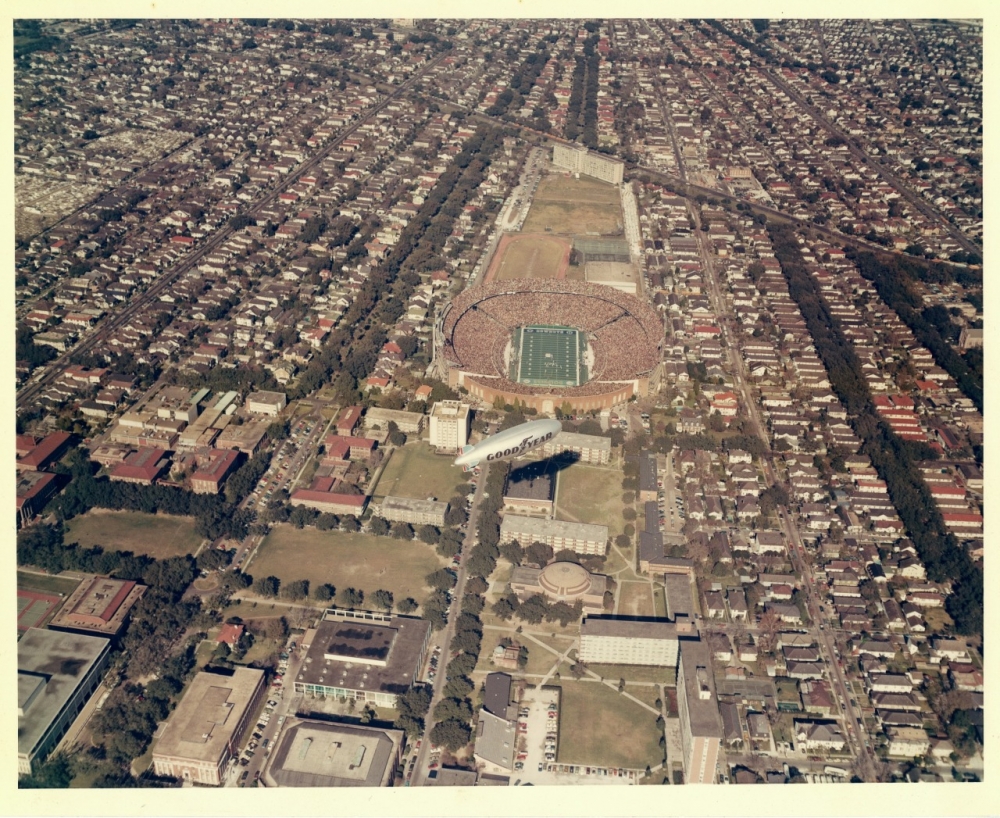
An aerial image shows Tulane Stadium packed for Super Bowl VI in 1972. The game featured the Dallas Cowboys and Miami Dolphins. Dallas won 24–3. (THNOC, gift of Mr. Sam R. Sutton, 1984.166.2.1051)
On September 17, 1967, the New Orleans Saints made their National Football League debut at Tulane Stadium in front of an announced attendance of 80,879 (they lost to the Los Angeles Rams 27-13). The Saints played their first eight seasons at Tulane Stadium before relocating to the Superdome for the 1975 season. These early games produced more than a few memorable moments, including John Gilliam’s 94-yard kickoff return for a touchdown in the franchise’s first regular-season game, and Tom Dempsey’s game-winning, 63-yard field goal against the Detroit Lions during the 1970 season.
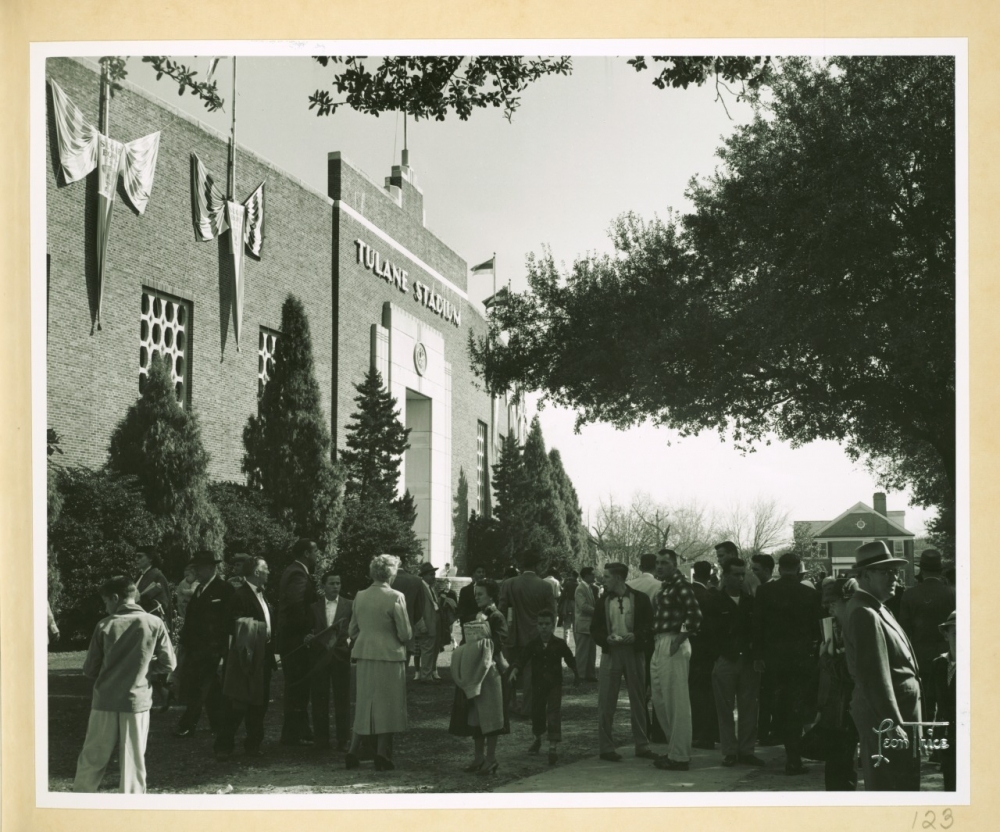
A crowd of people stands outside of Tulane Stadium in 1956, before the Sugar Bowl game between Pittsburgh and Georgia Tech. (THNOC, gift of the Sugar Bowl, 2007.0208.25)
The venue played host to other attractions as well, including the 1970 Soul Bowl music festival that featured James Brown and Tina Turner.
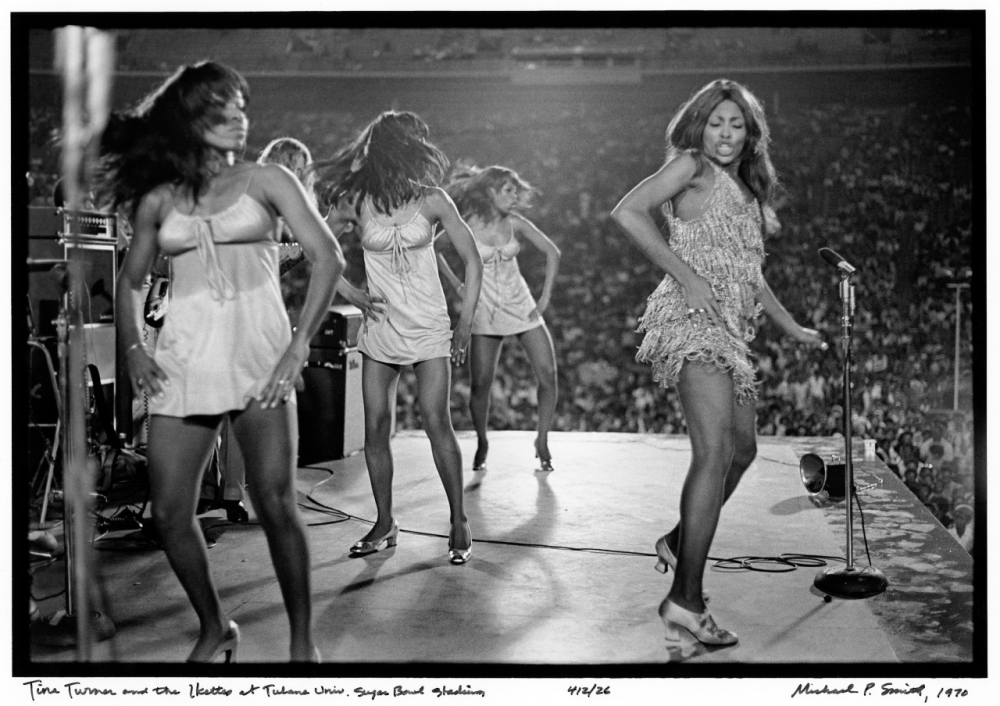
Tina Turner and the Ikettes perform at the Soul Bowl music festival, which took place at Tulane Stadium in 1970. (THNOC, gift of Master Digital Corporation, 2011.0307.11)
In 1976 Tulane Stadium celebrated its 50th birthday with little fanfare. The construction of the Superdome and the subsequent relocation of the Saints and Green Wave, for the 1975 and 1976 seasons respectively, made the outdated building unnecessary. A few years later, the stadium was demolished. College football finally returned to Uptown New Orleans in 2014, with the opening of Yulman Stadium—situated immediately lakeside of the old Tulane Stadium site—which the Tulane Green Wave now call home.
A version of this story originally appeared in the Historically Speaking column of the New Orleans Advocate.

